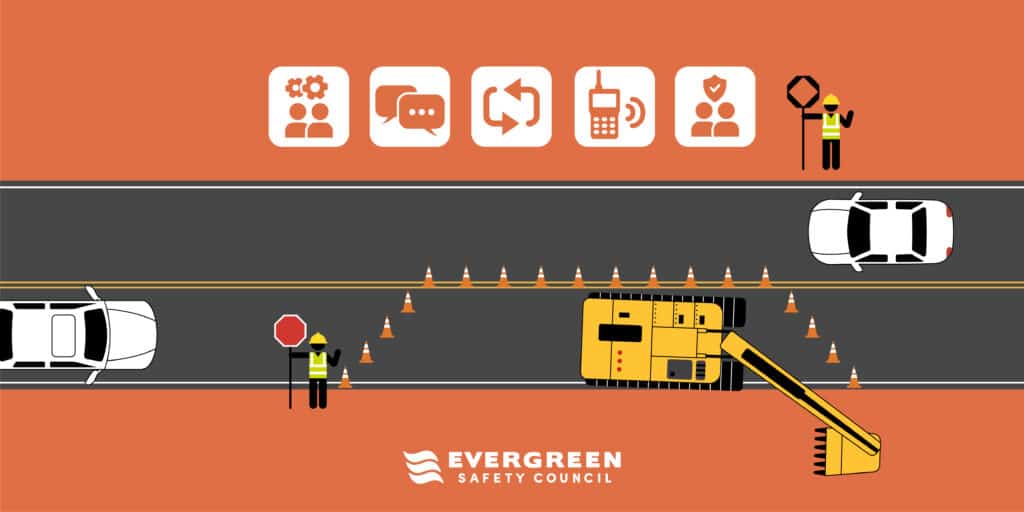Traffic control is a critical part of ensuring safety at construction sites, in road work zones, at public events, and even during roadside emergencies. When working with one or more flaggers, coordination and communication are essential for maintaining smooth and safe traffic flow. Here’s a guide to effectively working as a team while controlling traffic.
Set up the work zone correctly
A properly prepared work zone reduces confusion for both drivers and flaggers. Place warning signs, cones, and barricades far enough ahead of the work zone to alert drivers. Each flagger should position themselves where they are visible to oncoming traffic but safe from vehicles’ paths of travel.
Understand your roles and responsibilities
Before traffic control begins, make sure you clearly assign roles to all flaggers. Each flagger should know their station, responsibilities, and the flow of traffic they are managing. In multi-flagger setups, one flagger typically manages each direction of traffic, while additional flaggers may be assigned to intersections or areas with limited visibility. Avoid overlapping roles, as this can lead to confusion.
Establish clear communication
Effective communication is crucial for coordinating traffic flow. Use at least one of the following methods to stay in sync with your team:
- Handheld radios: Radios are a reliable way to relay instructions or warnings quickly.
- Hand signals: Familiarize yourself with standard hand signals such as “Mother may I?” to communicate when verbal tools aren’t effective.
- Eye contact: When close to each other, establish eye contact to confirm readiness before signaling traffic.
Stay in sync
You must stay in sync with your fellow flaggers to ensure smooth traffic flow and reduce the risk of collisions. When transitioning traffic flow from one direction to another:
- Wait for confirmation from the other flagger before allowing your traffic to proceed.
- Use a mix of hand signals and verbal confirmation (via radio) to ensure you’re both ready.
This synchronization is especially important in long or complex work zones where drivers can’t see both flaggers at once.
Adapt to changing conditions together
Traffic control is dynamic and conditions can change quickly. If a situation arises, such as a backup of vehicles or a sudden hazard, communicate immediately with your fellow flaggers. Adjust positions, traffic flow, or signaling as necessary to address the issue while maintaining safety. Always check with your supervisor and other flaggers before making any significant changes to the traffic pattern.
Prioritize safety as a team
When working with multiple flaggers, the entire team must prioritize safety at all times by:
- Maintaining a safe distance from the active roadway
- Ensuring that all flaggers wear the proper high-visibility gear and follow proper procedures
- Regularly check on one another to ensure everyone is alert and ready to continue
If a team member seems fatigued or distracted, work together to redistribute duties temporarily to keep safety as the top priority.
Regardless of what type of flagging you are doing, always follow the MUTCD standards (plus any additional local rules) for apparel, equipment, placement, and hand signals.
Conclusion
Working with other flaggers requires clear communication, well-defined roles, and synchronized movement. By staying coordinated and prioritizing safety, you can ensure smooth traffic control even in the most challenging conditions.
